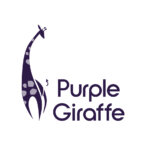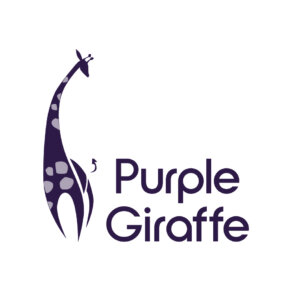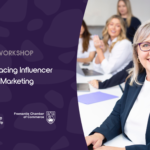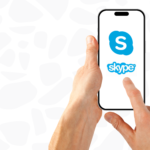Most major events these days have the support of major sponsors. Sponsorship provides brands with an amazing platform for exposure and awareness. In return, many of these events must receive a level of corporate support to be able to take place.
Sponsorship, as a part of a broader marketing strategy, is becoming increasingly effective as a method of reaching specific and targeted audiences.
The question is does sponsorship make sense for the businesses and corporations that invest in these events, or is it impossible to measure, provide a low ROI and therefore an ineffective use of limited resources?
With steady increases year-on-year, global sponsorship spend continues to grow and in 2019 it toped US $70B. Globally when we look at who is typically spending the bigger portions of that figure, it’s the big brands with big budgets – PepsiCo, AB InBev, Coca-Cola, Nike, Toyota, and other international brand giants.
The thing is for many of these brands, the world knows who they are and already buys their products. We see and engage with them pretty much everywhere. So, the questions are, why do they keep spending on sponsorship? Is sponsorship worth it if they don’t need the branding play?
Absolutely!
The reason we know so much about these brands is for those exact reasons. They spend immense amounts of time, resources, and money to be visible so that consumers can interact and build relationships with them – part of this strategy is engaging in sponsorship.
But these are big global brands that have multi-pronged and huge marketing budgets and are able to back up their sponsorship spend with advertising, social media, digital marketing, product placement and point of sale. How does this then apply to smaller brands and is spending dollars on sponsorship providing any return for the little guys?
The answer is still yes but sponsorship needs to be a strategic part of a marketing strategy that is fully leveraged and integrated.
In this blog, we will explore the pros and cons of this marketing tactic and how to make it successful and worth the investment.
Connect and engage with your customer where they are
Sponsoring an event, where a large group of your potential customer market segment is located, provides the opportunity to connect with them at a place, time and moment where they are engaged and have actively chosen to participate in. It also provides the opportunity to do this in a less crowded space as many other brands in your product category have not paid for this right, and are therefore not present.
Use the event to tell a story
Sponsorship of the event allows a business to access a more personal space with an audience. Acceptance and thank you speeches allow representatives from the company to be seen and heard, on-site activities allow the brand and product to directly engage with the people on the ground, athletes using, eating, drinking or thanking the brand allow it to become a hero.
It is also best practice to use this sponsorship asset as a part of your brand story, to promote your involvement in other parts of your marketing strategy so it’s integrated (a key example of this is use on social media). In addition, use the opportunity to make sure that your brand becomes a part of the event story.
Communicate through others on a large scale
Sponsorships provide the opportunity for your brand to communicate via a third party voice that is trusted to an audience who are passionate and engaged. Some of the most powerful sponsorship benefits and entitlements include the opportunity to post on the events social media platforms, inclusion in their e-newsletters, inclusion in their media packs and ticketing to their corporate events. It’s a chance to get in front of a new audience, endorsed by a trusted source, repeatedly.
Brand awareness as a soft sell
Consumers of today are inundated with advertising messages. Finding a way to break through and get your message across, or your brand seen, isn’t as easy as buying another banner ad or running another radio spot. To stand out, you must now occasionally also blend in. Another term for this is to employ a native marketing approach. This is about getting a refined message to a consumer in a subconscious, alternative way when they are open to receiving it. Sponsorship is the perfect soft sell way to do this and presenting your brand using this method allows you to build credibility, trust, and thereby engagement for your brand with potential customers without them even realising it.
Be a good business citizen and provide support
Providing sponsorship to an event shows that as a corporate citizen and business you have an interest in something outside of your business and that you are prepared to commit financially to this interest. This goes a long way in the hearts and minds of the patrons of the event, who also have also spent their hard earned dollars on buying a ticket to the event and share that same interest and passion. They will acknowledge this support in a shared passion and understand that they have something in common with your brand and values. This could come to fruition in the future.
Activate and then invest more in the investment
Arguably the most important but often the most rushed piece of the pie. Activation is the very idea that you bought in the first place — connecting with these potential customers on a meaningful level. Having a good plan in place is critical to getting the most of your sponsorship investment. On top of the sponsorship funds, further invest in the activity so that you are able to fully leverage it. This strategy will mean that the sponsorship will pay dividends even after it is over.
View it as a long term game, not for short term gain
The reality is, no one is going to tell you they purchased that wine, that new piece of sporting equipment, that new car, their home insurance or any other good or service from a sponsorship. The long-term impact of that continued exposure, messaging, and affiliated trust being built with your brand begins to change consumer perception and behaviour over time and subconsciously. So, will a sponsorship give you a 1:1 ROI today or tomorrow? Maybe, if you can include on-site sales at the event but that’s not the win. The long-term impact is the true strategy. You’re channelling the passion of the audience to associate with your brand and it’s a long-term game.
Blogs and articles read in the research of this blog:
- https://blog.koresoftware.com/blog/sponsorship-worth-if-we-it-dont-need-branding-play
- https://www.mckinsey.com/business-functions/marketing-and-sales/our-insights/is-sports-sponsorship-worth-it
- https://cmglocalsolutions.com/blog/are-sponsorships-worth-it







